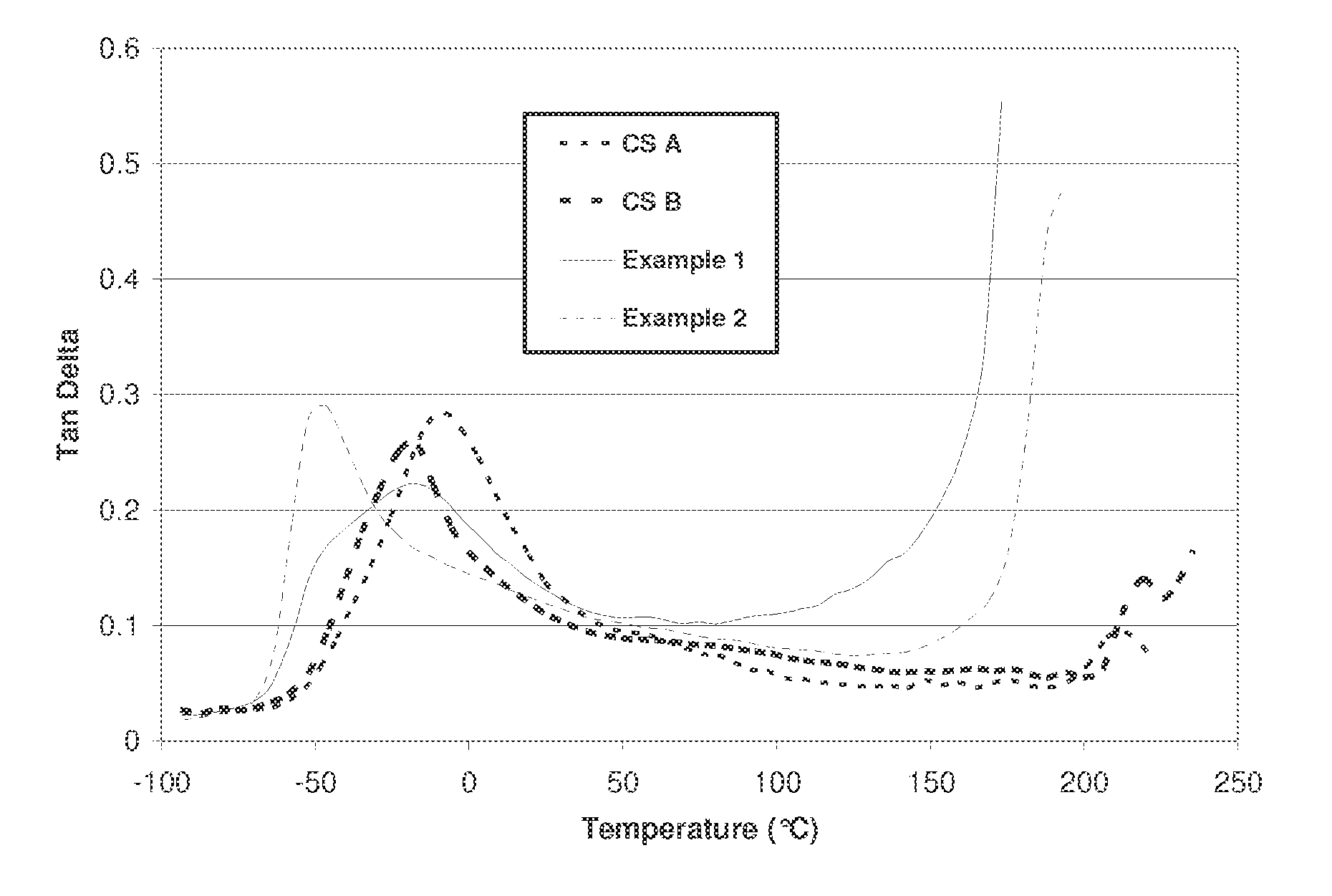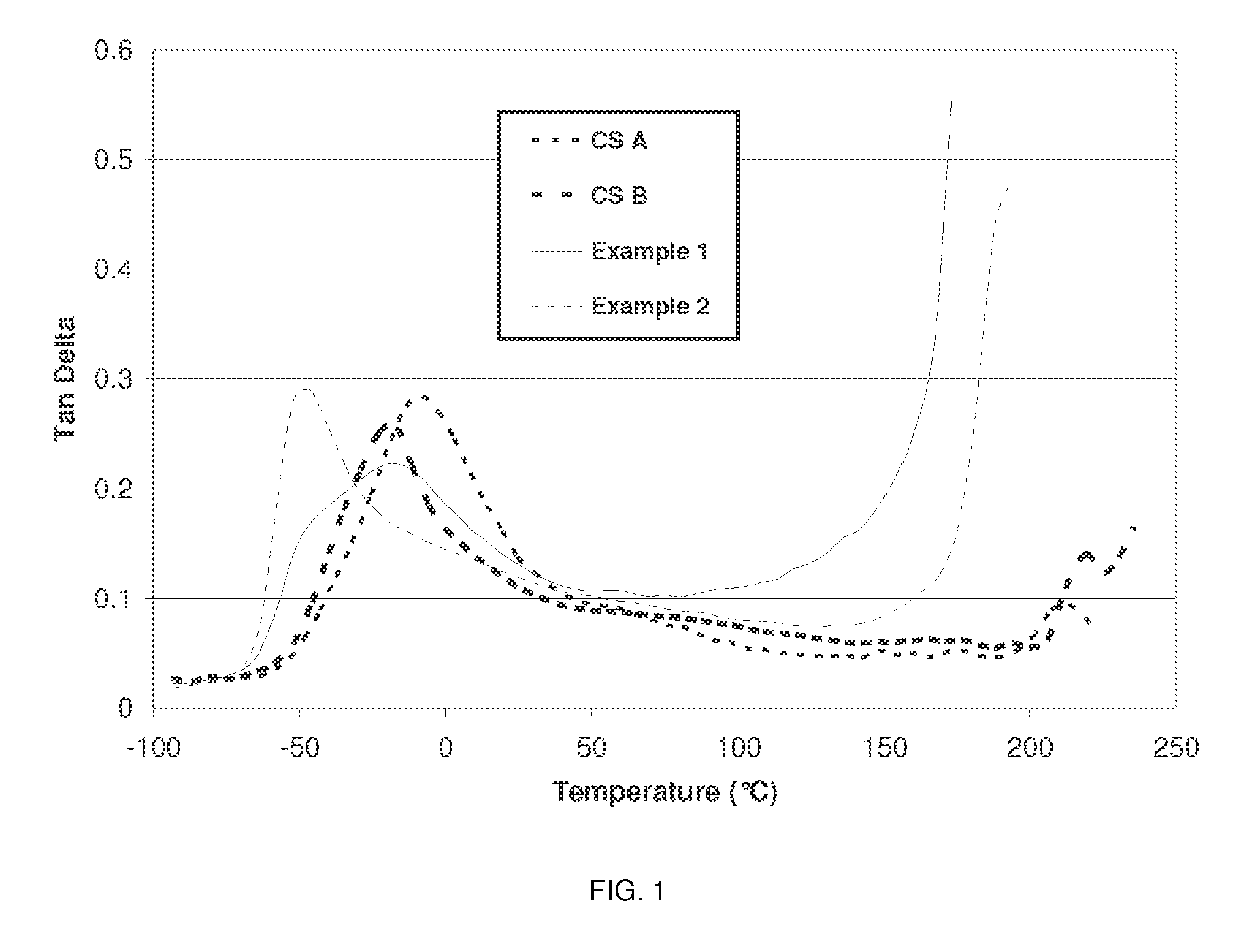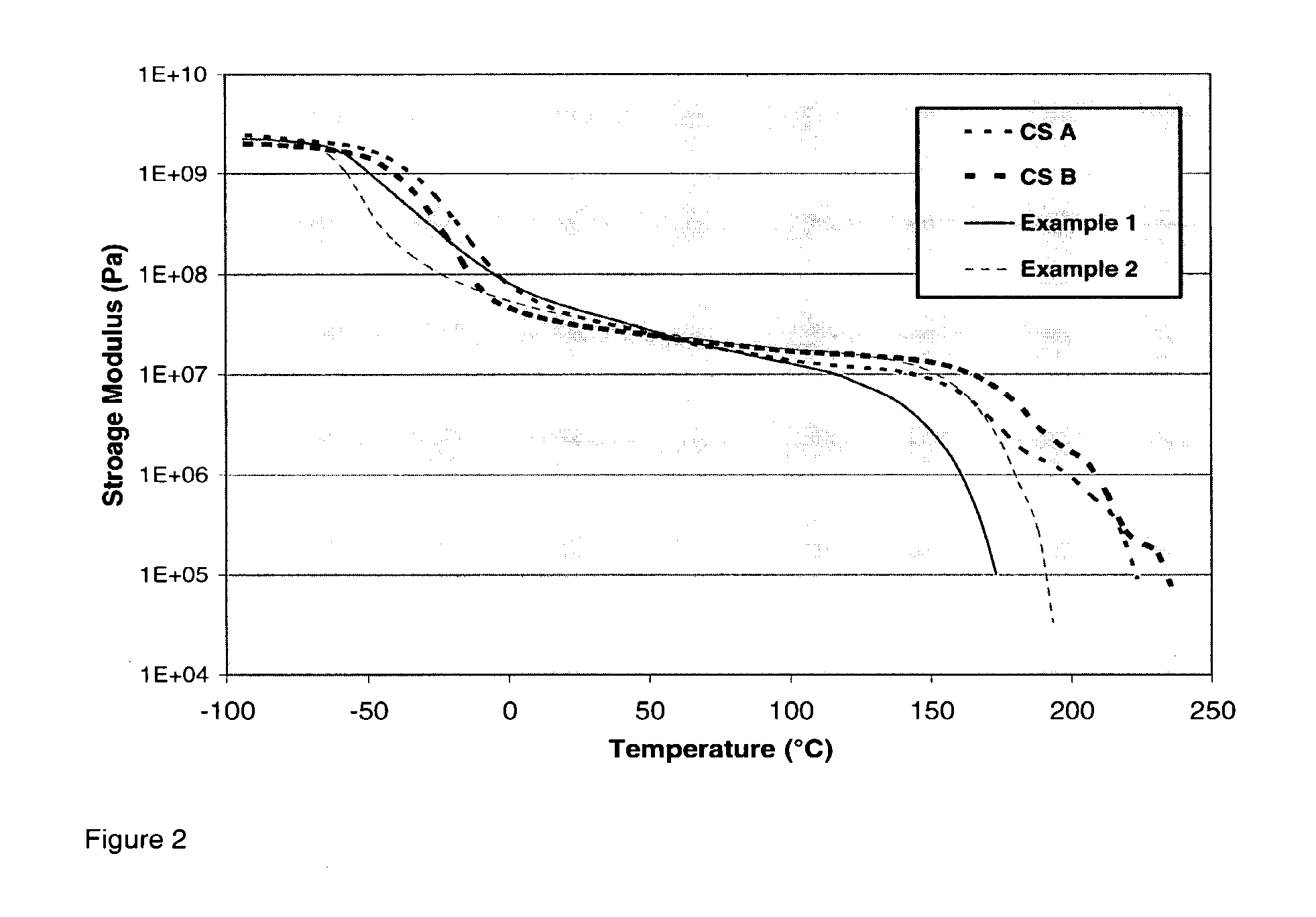Prepolymers and polymers for elastomers
a technology of polymer and elastomer, applied in the field of polymer and prepolymer, can solve the problems of insufficient elongation and little application of polymer in elastomeric polyurethanes
- Summary
- Abstract
- Description
- Claims
- Application Information
AI Technical Summary
Benefits of technology
Problems solved by technology
Method used
Image
Examples
examples
[0083]The following materials are used in making foams of the invention:
NOPO-A is a 2.0-functional natural oil polyol prepared using VOB monomers with an average of 1.0 hydroxyls per fatty acid derived from soy oil in its natural abundance yielding a distribution of about 27 percent weight percent saturated VOB monomer, about 40 percent weight percent mono-hydroxy VOB monomer, and about 33 percent weight percent di-hydroxyl VOB monomer. It is made by reacting these hydroxymethylated soybean fatty acid methyl esters with a 400 molecular weight, poly(ethylene oxide) glycol at a 3.8:1 molar ratio, using 650 ppm stannous octoate (commercially available from City Chemical Co.) as the catalyst. The resulting polyester has a viscosity of 1500 cP at 25° C., a hydroxyl equivalent weight of 744, Mn of 1488. NOPO-A has an average of approximately 2.0 hydroxyl groups / molecule. NOPO-A corresponds to Structure I, wherein X is —O—, and n=2.
NOPO-B is a 2.0-functional natural oil polyol prepared usi...
examples 1-2
and Comparative Samples A and B
[0084]For each of Examples 1-2 and Comparative Samples A and B, the amounts and types of polyol and isocyanate in Table 1 are combined in a glass reactor having an approximate volume of 200 ml and stirred under a blanket of nitrogen. The polyol and isocyanate are reacted at a temperature of 80° C. uncatalyzed for a period of 4 hours to form a prepolymer. The resulting prepolymer is then characterized for free isocyanate content by the procedure of ASTM d5155 to confirm completion of the reaction. Then the prepolymer is reacted with the amount of 1,4-butanediol (BDO) shown in Table 1, in the presence of 0.01 weight percent of total reaction mixture of dibutyltin dilaurate catalyst commercially available from Air Products under the trade designation Dabco T-12 by combining them in a tri-pour container having a volume of 200 ml and hand mixed using a spatula at a temperature of 50° C. for a period of 10 minutes to initiate urethane reaction. The reaction ...
example 4-9
and Comparative Samples D-G
[0095]For each of Examples 4-9 and Comparative Samples D-G, the amounts and types of polyol and isocyanate in Table 4 are combined in a glass reactor having an approximate volume of 140 ml and stirred under a blanket of nitrogen. A drop of benzoyl chloride is added to make the reaction medium slightly acidic. The polyol and isocyanate are reacted at a temperature of 80° C. uncatalyzed for a period of 4 hours to form a prepolymer. The resulting prepolymer is then characterized for free isocyanate content by the procedure of ASTM d5155 to confirm completion of the reaction. Then, the prepolymer is reacted with the amounts and types of chain extender shown in Table 4 at a stoichiometry of 1.05:1. The reaction mixture is then poured into a press measuring 16×16 cm where it is pressed at 140 MPa at 80° C. for a period of 1 hour to form a plaque. The plaque is then taken out of the heated press and placed into an oven for 23 hours at 80° C. to complete the react...
PUM
| Property | Measurement | Unit |
|---|---|---|
| weight percent | aaaaa | aaaaa |
| weight percent | aaaaa | aaaaa |
| Tg | aaaaa | aaaaa |
Abstract
Description
Claims
Application Information
 Login to View More
Login to View More - R&D
- Intellectual Property
- Life Sciences
- Materials
- Tech Scout
- Unparalleled Data Quality
- Higher Quality Content
- 60% Fewer Hallucinations
Browse by: Latest US Patents, China's latest patents, Technical Efficacy Thesaurus, Application Domain, Technology Topic, Popular Technical Reports.
© 2025 PatSnap. All rights reserved.Legal|Privacy policy|Modern Slavery Act Transparency Statement|Sitemap|About US| Contact US: help@patsnap.com



